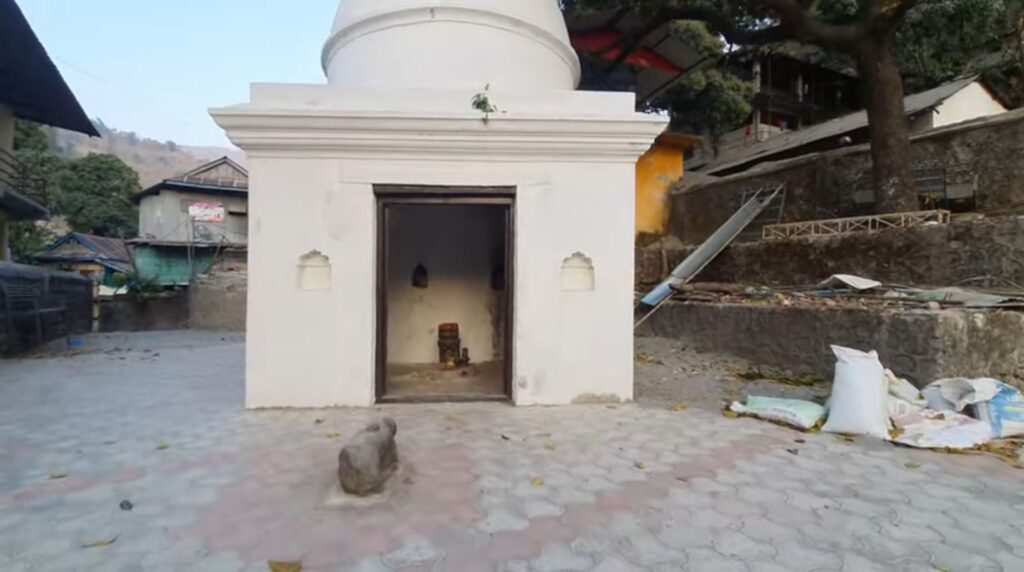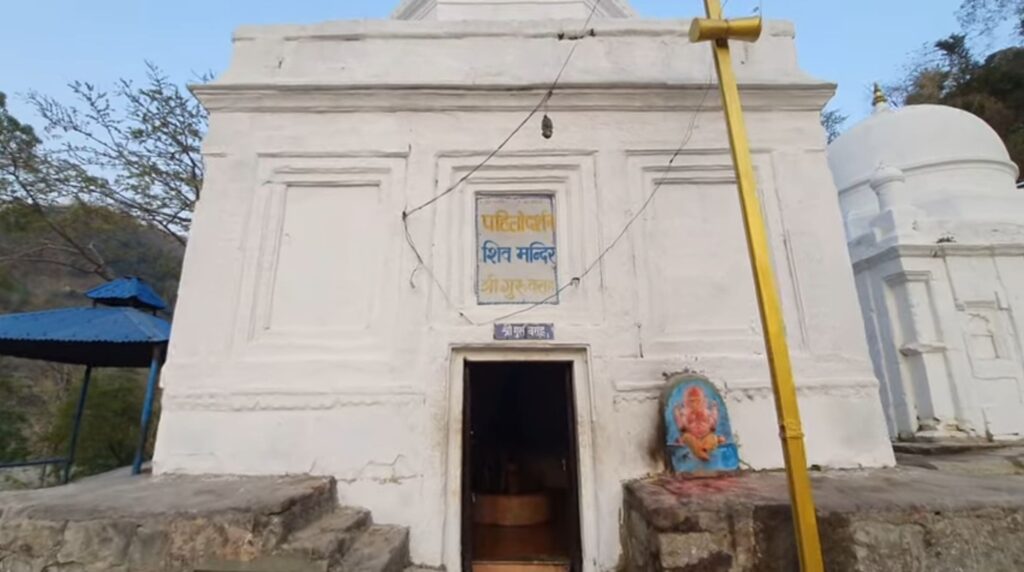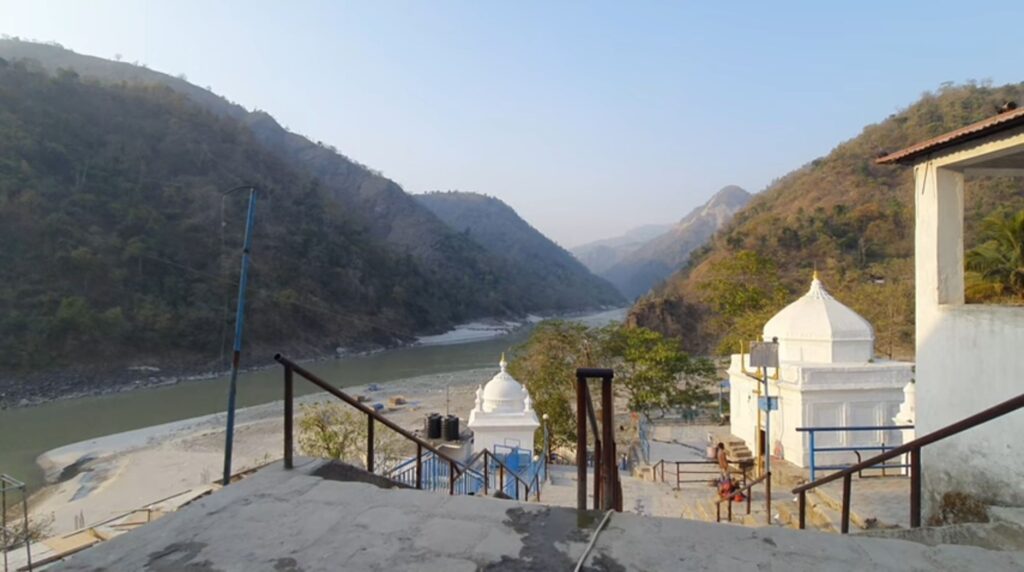Unveiling the Mystical Wonders of Baraha Kshetra: A Divine Sanctuary in Sunsari, Nepal
Embark on a Spiritual Journey to Nepal's Hidden Gem

Table of Contents
Introduction
Welcome to Baraha Kshetra: A Glimpse into Nepal's Spiritual Heritage
- Welcome to the serene sanctuary of Baraha Kshetra or Barahakshetra also known as Barahachhetra and Varahakshetra, where the echoes of ancient spirituality resonate through the tranquil landscapes of Baraha Kshetra, Sunsari, Koshi Province of Nepal with approximately 26.83°N latitude and 87.18°E longitude between the confluence of the Koka and Koshi rivers and is at an elevation of 214 meters (702 ft) above sea level. As you step into this sacred abode, you are greeted by the gentle whispers of the wind and the soft murmur of the Saptakoshi River, inviting you on a journey of spiritual discovery.
- Baraha Kshetra is more than just a physical destination; it is a portal to Nepal’s rich spiritual heritage, offering a glimpse into the profound beliefs and traditions that have shaped the lives of generations. Here, amidst the verdant hills and ancient temples, you’ll find a sanctuary for the soul, where seekers of truth and enlightenment come to find solace and inner peace.
- Join me as we embark on a journey through the mystical wonders of Baraha Kshetra, where every step is a testament to the timeless wisdom and divine grace that permeates this sacred land. Prepare to be captivated by the beauty of Nepal’s spiritual legacy as we delve deeper into the heart of Baraha Kshetra and uncover the secrets within its sacred soil. Welcome, dear traveler, to a realm of transcendence and spiritual awakening – welcome to Baraha Kshetra.

Discovering Baraha Kshetra: Nepal's Ancient Haridwar
Unraveling the Sacredness

- Our exploration begins with a sense of reverence, as we pay homage to the divine presence that resides within Baraha Kshetra. The majestic Baraha Temple stands as a beacon of faith, its ornate architecture a testament to the devotion of generations past.
- But our journey doesn’t end there. As we meander through the labyrinthine pathways of Baraha Kshetra, we encounter a myriad of sacred sites and shrines, each dedicated to different Hindu, Kirat, Buddhist, and more deities.
- Yet, amidst the ancient temples and sacred rituals, there is also a profound sense of peace and tranquility. Here, amidst the hustle and bustle of modern life, visitors are invited to pause and reflect, connect with their inner selves, and find solace in the timeless wisdom of Baraha Kshetra.
Baraha Kshetra holds a revered status as Nepal’s version of Haridwar, and this comparison isn’t made lightly. Here’s why it’s dubbed as the ancient Haridwar:
Echoes of Myth and Legend: Just like Haridwar in India, Baraha Kshetra resonates with echoes of ancient myth and legend. It’s believed to be the site where Lord Vishnu, in his Varaha avatar (the boar incarnation), descended to rescue the earth goddess, Bhudevi. This divine tale intertwines Baraha Kshetra with spiritual significance similar to Haridwar.
Confluence of Sacred Rivers: Haridwar is renowned for its confluence of sacred rivers, and Baraha Kshetra shares this attribute. Situated at the junction of the Sapta Koshi and Koka Koshi rivers, it’s considered a potent site for spiritual purification and renewal, akin to the cleansing powers of the Ganges at Haridwar.
Pilgrimage Destination: Both Haridwar and Baraha Kshetra attract pilgrims from far and wide, drawn by the promise of spiritual enlightenment and divine blessings. Pilgrims flock to these sacred sites to perform rituals, seek blessings, and immerse themselves in the sacred atmosphere, forging a deep connection with their faith.
Cultural Significance: Haridwar and Baraha Kshetra are not just spiritual centers; they’re cultural icons deeply embedded in the fabric of their respective regions. They host a plethora of festivals, rituals, and cultural events that celebrate the rich heritage and traditions of the land, uniting devotees and visitors in a shared sense of reverence and devotion.
Legacy of Spiritual Heritage: Both Haridwar and Baraha Kshetra boasts a rich legacy of spiritual heritage that spans centuries. They’ve witnessed the ebb and flow of time, yet their sacredness remains timeless, inspiring generations with their profound spiritual significance and unwavering devotion.
In essence, Baraha Kshetra earns its title as Nepal’s ancient Haridwar by embodying the spiritual essence, cultural richness, and timeless legacy that define this revered pilgrimage destination.
The Legend of Baraha Kshetra
Unraveling the Mythical Origins of Baraha Kshetra

- Deep within the folklore of Sunsari, Nepal, lies a captivating tale that weaves together the threads of myth and legend to tell the story of Baraha Kshetra. As we delve into the mystical origins of this sacred sanctuary, we are transported back to a time when gods walked the earth, and miracles were commonplace.
- The Baraha Kshetra is one of the ‘Char Dham’ (four holy places) of Nepal. The other three are Pashupati Kshetra, Mukti Kshetra, and Ruru Kshetra. On the other hand, out of the 4 Dham (Kshetra) of Hindu mythology, 2 are in India and 2 are in Nepal which are Kurukshetra and Dharmakshetra in India and Barahakshetra and Muktinath or Muktikshetra in Nepal. This holy place Baraha Kshetra boasts a rich history and one of Nepal’s oldest shrines in the revered Puranas like the Brahma Purana, Varaha Purana, and Skanda Purana, which are mentioned in the Mahabharata too.
- According to Hindu mythology, the genesis of Baraha Kshetra can be traced back to the divine exploits of Lord Baraha, an incarnation of the mighty Vishnu. It is said that eons ago, the earth goddess Bhudevi found herself ensnared by the demon Hiranyaksha, who had plunged her into the depths of the cosmic ocean.
- In her hour of need, Bhudevi called out to Lord Vishnu for help, and he responded by taking the form of a boar, known as Baraha. With his tusks as mighty as thunderbolts, Baraha descended into the depths of the ocean, where he battled the demon and rescued Bhudevi from her watery prison.
- As Baraha emerged triumphant from the cosmic depths, his hooves touched the earth, leaving behind a trail of divine footprints that would later become known as Baraha Kshetra. It is said that these footprints, imprinted upon the sacred soil of Sunsari, mark the spot where the earth goddess was liberated from captivity.
- The construction of Barah Kshetra Dham (Temple), the first pilgrimage site on Earth, dates back to ancient times, and its exact builder is not documented. However, according to Hindu mythology and local beliefs, the temple is believed to have been established by religious rulers and devotees who recognized the sanctity of the place associated with Lord Vishnu’s Baraha (Varaha) avatar. Over the centuries, the temple has undergone renovations and enhancements by successive rulers and communities, contributing to its current form as a revered pilgrimage site in Nepal.
- There are legendary stones in front of the temple. According to Hindu mythology, the stones mark the difference between pilgrims, whether sinful or sinless. People also believed that only innocent, virtuous, or sinless people could lift stones. However, those who cannot lift stones are considered sinners.
- The original temple of Baraha Kshetra was built in BS (VS) 1991 in its present form. Juddha Shamsher rebuilt the temple for the last time in BS 1991 after the temple was destroyed by the BS 1990 earthquake. Baraha Kshetra has 9 temples including Lakshmi, Panchayan, Guru Baraha, Surya Baraha, Kok(a) Baraha, Nageshwar, and many Dharamshala. For more than 1500 years old idols have been found in this place.
- The legend of Baraha Kshetra serves as a testament to the power of faith and the triumph of good over evil. It reminds us that even in our darkest moments, there is always hope, and that divine intervention is never far away.
- Today, as we stand upon the banks of the Saptakoshi and Koka Rivers, gazing upon the ancient temples and stone spouts of Baraha Kshetra, we are reminded of the enduring legacy of this sacred sanctuary. It is a place where the past meets the present, where myth and reality intertwine to create a tapestry of spiritual significance.

Sacred Sites and Shrines
Journey Through the Spiritual Landmarks of Baraha Kshetra

- The majestic Baraha Temple stands as a sentinel of faith and devotion. Adorned with intricate carvings and adorned with colorful flags, this temple serves as a focal point for pilgrims seeking blessings and solace.
- As we venture forth, we encounter myriad shrines dedicated to various Hindu deities, each with its unique significance and symbolism. From the serene abode of Lord Shiva, Lakshmi, Panchayana, Guru-Baraha, Surya-Baraha, Koka-Baraha, and Nageshwar to the resplendent shrine of Goddess Bhudevi, every corner of Baraha Kshetra resonates with the divine presence of the Gods and Goddess.
- Pilgrims come in all seasons, but special celebrations are organized on the occasion of Kartik Purnima and Makar Sankranti. They prefer to visit Baraha-Kshetra from India on Kartik Purnima, while they come from hilly Nepal on Makar Sankranti. Apart from this, a large number of pilgrims come on Rishi Panchami, Byas Panchami, Phagoo Purnima, and other Ekadashi or other fasting and festive days. Every day looks like a festival because of the regular rush of people.
- Maha Kumbh(a) Mela is held every 12 years in Baraha-Kshetra (Chataradham) since BS 2059, and Nepal is also the world’s fifth Maha Kumbh Mela destination. Ardha Kumbh Mela has been held every 6 years since BS 2058. The second program [Maha Kumbh(a) Mela] was held in BS 2070 for a month. In BS 2070, more than 600,000 people visited the Koshi River for Kumbha Snan (Holy Bath). The next third Maha-Kumbha Mela is set to be held this year (2024 AD) from April 9 to May 10.
- But it is not just the temples and shrines that captivate the soul but also the natural beauty surrounding us. The gentle flow of the Saptakoshi River, the verdant hills that embrace the horizon, and the lush greenery that carpets the land – all serve as reminders of the sacredness of this place.
- As we pause to offer prayers and pay homage to the gods, we are filled with a sense of peace and tranquility that transcends the material world. Here, amidst the spiritual landmarks of Baraha Kshetra, we find solace in the embrace of the divine and rediscover our connection to the eternal.
Immersing in Spiritual Tranquility
Finding Peace and Serenity Amidst the Mystique of Baraha Kshetra

- In the embrace of Baraha Kshetra, amidst the gentle flow of the Saptakoshi River and the whispers of ancient trees, one finds a sanctuary for the soul. Here, amidst the mystical allure lies a place where the chaos of the world fades away, and inner peace reigns supreme.
- As we step into the tranquil grounds of Baraha Kshetra, we are greeted by a sense of calm that washes over us like a gentle breeze. The sacred energy of this place envelops us, inviting us to leave behind the worries and stresses of everyday life and embrace the serenity that surrounds us.
- In the presence of the ancient temples and sacred shrines, we find solace in the rituals and prayers that echo through the air. Each chant, each offering, is a testament to the enduring faith of those who have come before us, and a reminder of the power of devotion to uplift the spirit.
- But it is not just the religious rituals that bring peace to the soul; it is also the natural beauty that abounds. The lush greenery, the melodious songs of birds, and the soothing murmur of the river – all conspire to create an atmosphere of tranquility that is palpable to the senses.
- As we sit in quiet contemplation amidst the mystical mystique of Baraha Kshetra, we find ourselves drawn inward, connecting with our innermost thoughts and emotions. Here, in this sacred space, we are free to explore the depths of our soul and discover the true essence of our being.
Cultural Richness of Baraha Kshetra
Preserving Nepal's Heritage: The Cultural Tapestry of Baraha Kshetra

- Baraha Kshetra not only serves as a spiritual sanctuary but also stands as a guardian of the country’s rich cultural heritage. Here, amidst the serene landscapes and ancient temples, lies a tapestry of traditions, customs, and artistic expressions that have been carefully preserved through the ages.
- As we delve into the cultural richness of Baraha Kshetra, we are greeted by the sight of magnificent temples adorned with intricate carvings and vibrant colors. Each structure tells a story of Nepal’s rich architectural heritage, blending elements of Hindu, Buddhist, Kirat, and indigenous traditions into a harmonious whole.
- But it is not just the temples that embody Nepal’s cultural legacy; it is also the rituals, festivals, and artistic traditions that flourish within the sanctuary’s sacred confines. From colorful processions to traditional music and dance performances, Baraha Kshetra is a living testament to the vibrancy and diversity of Nepalese culture.
- As we wander through the temple grounds, we encounter skilled artisans practicing age-old crafts such as stone carving, woodwork, and pottery. Their hands deftly shape raw materials into works of art that reflect the beauty and intricacy of Nepal’s cultural heritage.
- But perhaps the most profound expression of Nepal’s cultural richness lies in the devotion and reverence of the people who visit Baraha Kshetra. Whether they come to offer prayers, participate in religious ceremonies, or simply soak in the sacred atmosphere, each visitor contributes to the tapestry of cultural traditions that define this sacred sanctuary.
- In preserving Nepal’s heritage, Baraha Kshetra serves as a beacon of cultural pride and identity, reminding us of the importance of safeguarding our shared history for future generations. So let us celebrate the cultural richness of Baraha Kshetra and honor the legacy of those who have come before us, for in doing so, we ensure that Nepal’s cultural heritage will continue to thrive for years to come.
Experiencing Baraha Kshetra
A Spiritual Pilgrimage: Delving into the Heart of Baraha Kshetra
- Embarking on a journey to Baraha Kshetra is more than just a physical excursion; it’s a soul-stirring pilgrimage that delves into the heart of spirituality and cultural heritage. this sacred sanctuary invites travelers to embark on a profound exploration of the divine.
- As we step into the hallowed grounds of Baraha Kshetra, we are enveloped by an aura of tranquility that permeates the air. The gentle murmur of the river, the rustle of leaves, and the distant sounds of prayers create a serene ambiance that beckons us to leave behind the worries of the world and connect with something deeper within ourselves.
- Our journey begins with reverence and humility as we pay homage to the ancient temples and shrines that stand as guardians of the sacred space. The Baraha Temple, with its majestic architecture and intricate carvings, serves as a focal point for spiritual reflection and devotion.
- But the true essence of experiencing Baraha Kshetra lies not in the physical structures, but in the spiritual awakening that occurs within. As we engage in rituals, prayers, and moments of quiet contemplation, we are invited to delve into the depths of our soul and connect with the divine presence that permeates all of creation.
- Each step we take, and each prayer we offer, becomes a part of our spiritual journey, guiding us closer to the heart of Baraha Kshetra and the essence of our being. Here, amidst the timeless beauty of nature and the ancient wisdom of the temples, we find solace, inspiration, and a renewed sense of purpose. we discover not only the divine grace that resides within but also the boundless potential of the human spirit.
Guided Insights and Anecdotes
Unveiling the Secrets of Baraha Kshetra: Route Options and Stories from Knowledgeable Guides
To reach Baraha Kshetra, you have several options:
Air Travel: Begin by flying to Biratnagar Airport, the closest major airport to Baraha Kshetra. From there, you can take a taxi or a bus to reach your destination. This option is convenient if you’re traveling from distant cities like Kathmandu or Pokhara.
Road journey: If you prefer a scenic road trip, you can travel by bus or hire a private vehicle from Kathmandu, Pokhara, or other major cities. The journey will take you through picturesque landscapes and vibrant towns, offering a glimpse of Nepal’s natural beauty along the way.
Local Transport: Once you arrive in Sunsari District, you can use local transport like bus, taxi, or rickshaw to reach Baraha Kshetra destination which is 5 km northwest of Dharan city in Sunsari. These options are cost-effective and allow you to interact with locals during your trip.
Navigating the Route: To ensure a smooth journey, consider using GPS navigation or asking for directions from locals once you’re in Sunsari district. They can provide valuable insights and guidance to help you reach Baraha Kshetra without any hassle.
- Baraha Kshetra is a place of physical beauty and a treasure trove of spiritual wisdom and cultural heritage. As visitors wander through the sacred grounds, they have the opportunity to uncover the secrets of this ancient sanctuary through the guidance of knowledgeable locals.
- These guides, steeped in the rich traditions and folklore of the region, offer invaluable insights and anecdotes that breathe life into the history and significance of Baraha Kshetra. With each step, they unravel the mysteries of the sacred sites and shrines, shedding light on the symbolism and rituals passed down through generations.
- From tales of divine intervention to anecdotes of miraculous occurrences, these stories offer a glimpse into the mystical world of Baraha Kshetra and the profound impact it has had on the lives of countless pilgrims and devotees. Through their words, visitors gain a deeper understanding of the spiritual significance of the sanctuary and the enduring legacy of Nepal’s cultural heritage.
- But beyond the myths and legends, the guides also provide practical insights and tips for navigating the sacred space with reverence and respect. They point out hidden gems and lesser-known landmarks, allowing visitors to uncover hidden treasures and experience the true essence of Baraha Kshetra.
- As visitors listen to these stories and anecdotes, they are enriched intellectually and spiritually. They gain a newfound appreciation for the interconnectedness of all things and the importance of preserving Nepal’s cultural heritage for future generations.
- So, dear traveler, as you embark on your journey to Baraha Kshetra, be sure to seek out the wisdom and guidance of these knowledgeable guides. For in their stories and insights lies the key to unlocking the secrets of this sacred sanctuary and experiencing its transformative power firsthand.

Conclusion
Embark on a Spiritual Odyssey: Discovering the Timeless Charm of Baraha Kshetra
- As we draw near the end of our exploration of Baraha Kshetra, we are reminded of the timeless charm and profound significance of this sacred sanctuary. It is more than just a physical destination; it is a spiritual odyssey that beckons travelers from far and wide to embark on a journey of self-discovery and enlightenment.
- In the heart of Baraha Kshetra, amidst the ancient temples and sacred shrines, we find a sanctuary for the soul – a place where the mundane world fades away, and we are free to connect with something greater than ourselves. Here, amidst the gentle flow of the river and the rustle of leaves, we discover a sense of peace and tranquility that transcends time and space.
- But beyond the serenity of its natural surroundings, Baraha Kshetra offers something far more profound – a glimpse into the rich tapestry of Nepal’s cultural heritage and spiritual legacy. Through its temples, rituals, and stories, we gain insight into the beliefs and traditions that have shaped the lives of generations past and continue to inspire awe and reverence today.
- As we prepare to depart from this sacred sanctuary, let us carry with us the lessons and blessings we have received during our time here. Let us cherish the memories of moments spent in quiet contemplation and the insights gained from stories shared by knowledgeable guides.
- And as we journey onward, may we carry the spirit of Baraha Kshetra within us – a beacon of hope, a source of inspiration, and a reminder of the boundless potential of the human spirit. For in discovering the timeless charm of Baraha Kshetra, we embark on a spiritual odyssey that enriches our lives and touches our souls in ways we never thought possible.
